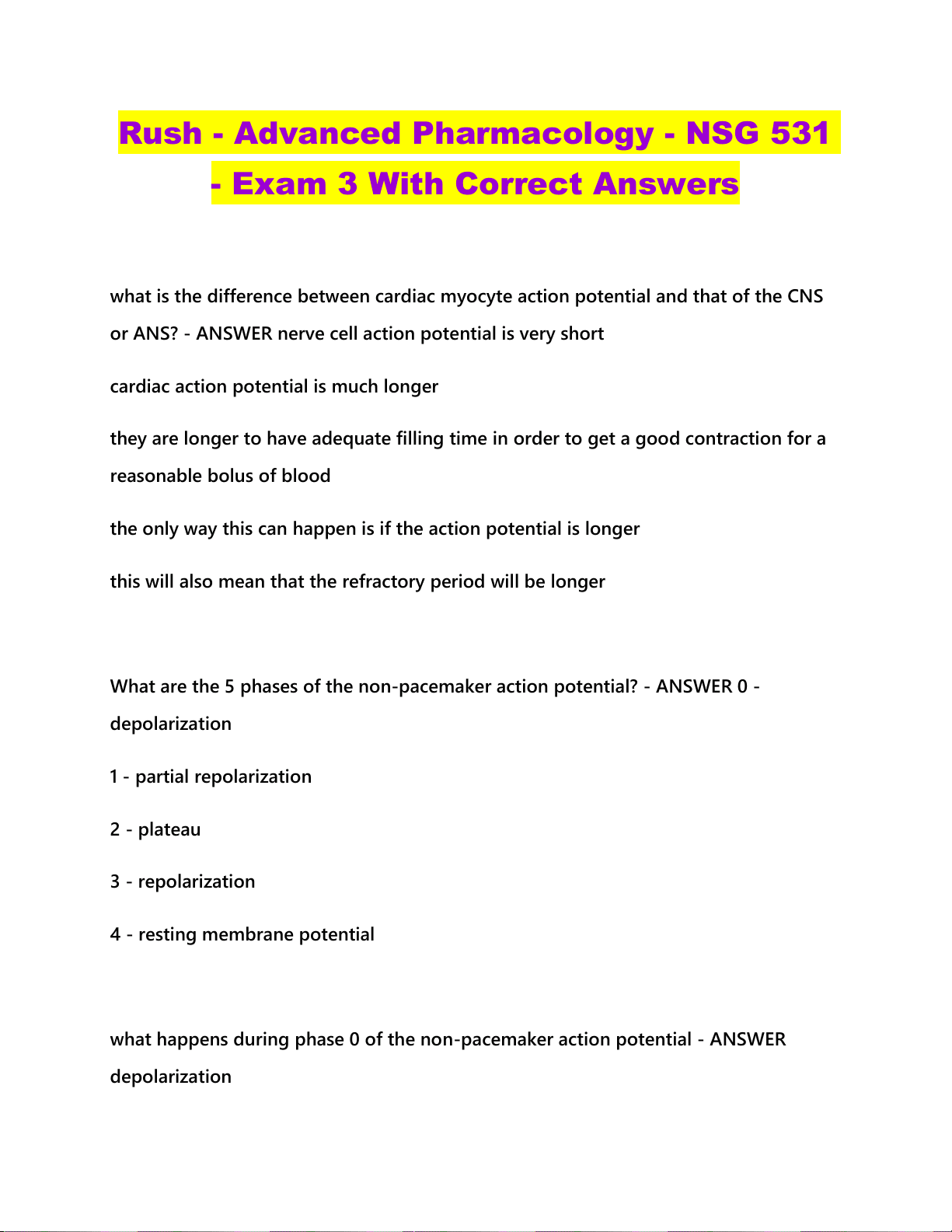
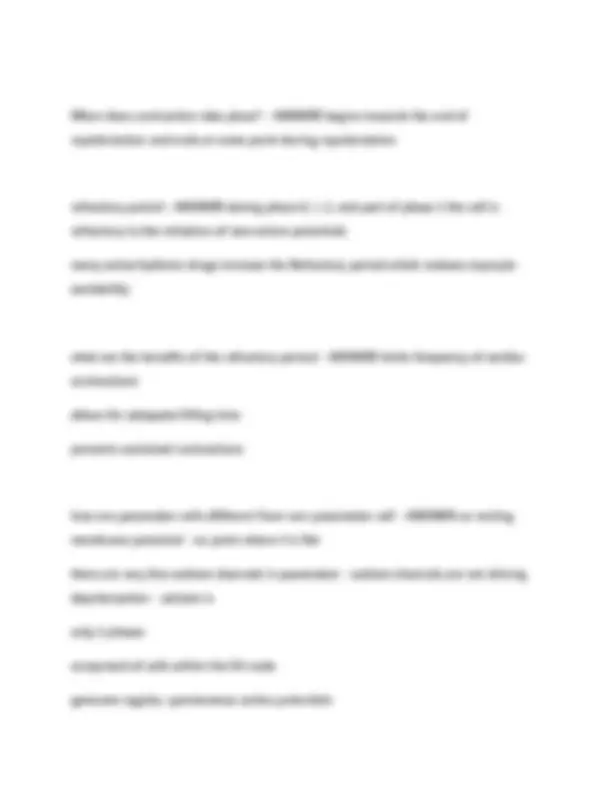
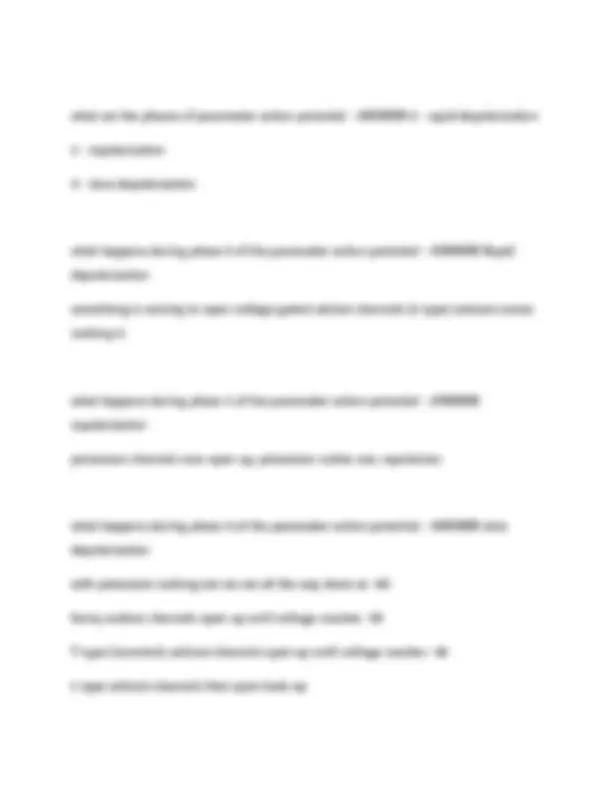
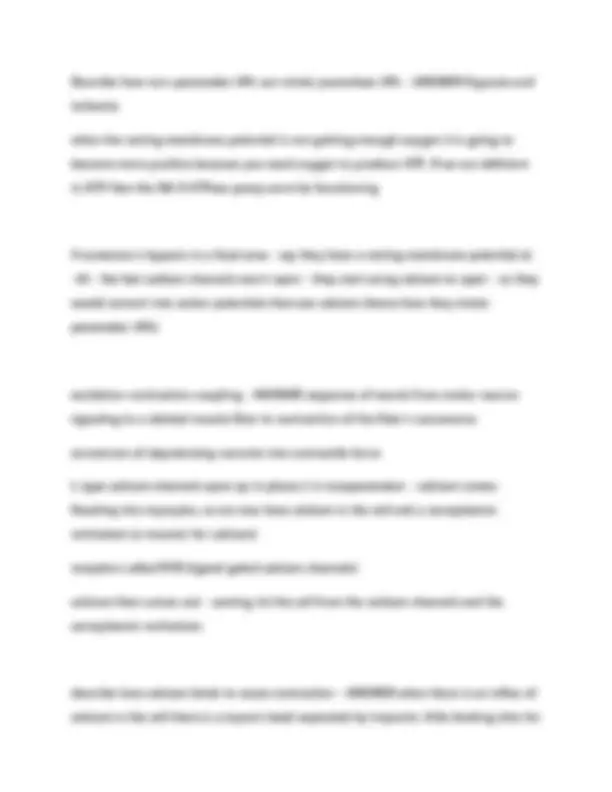
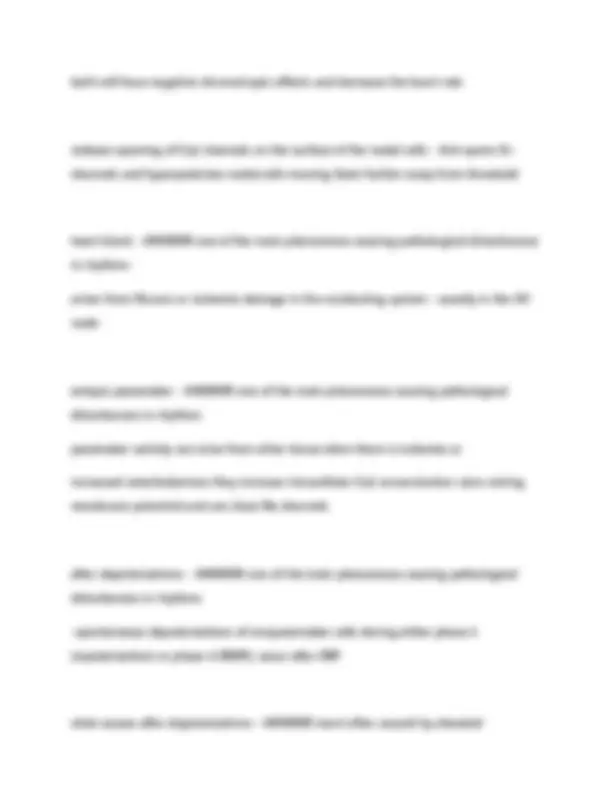
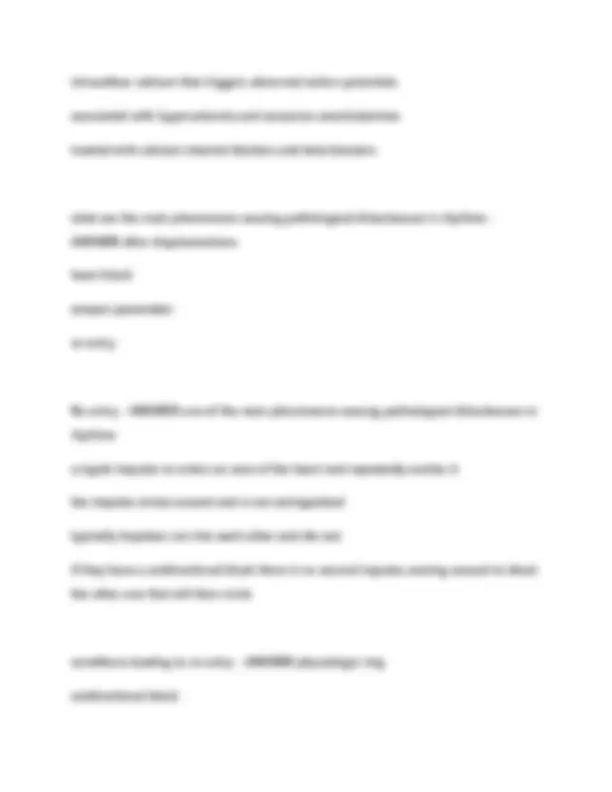
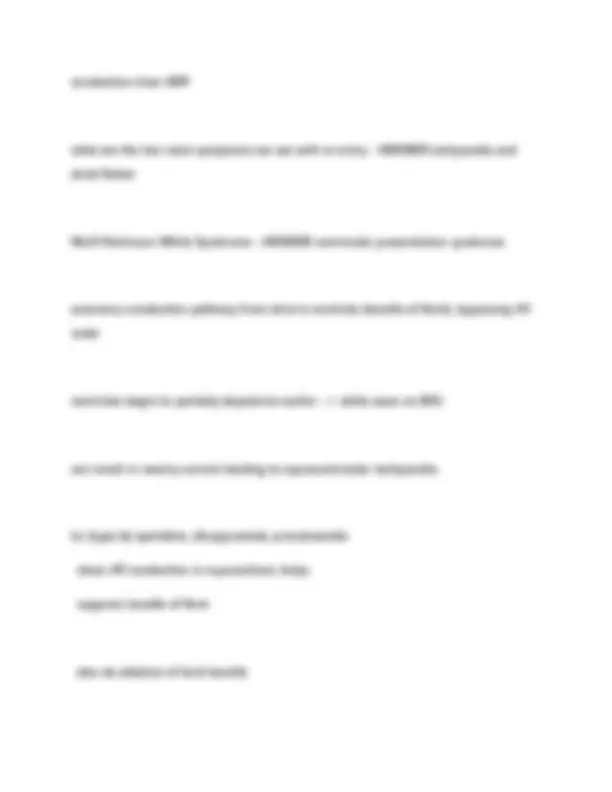
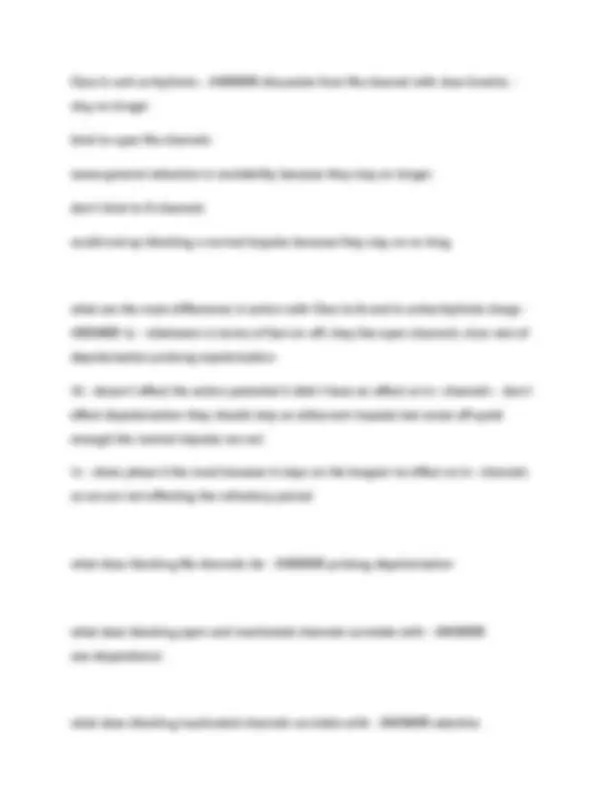
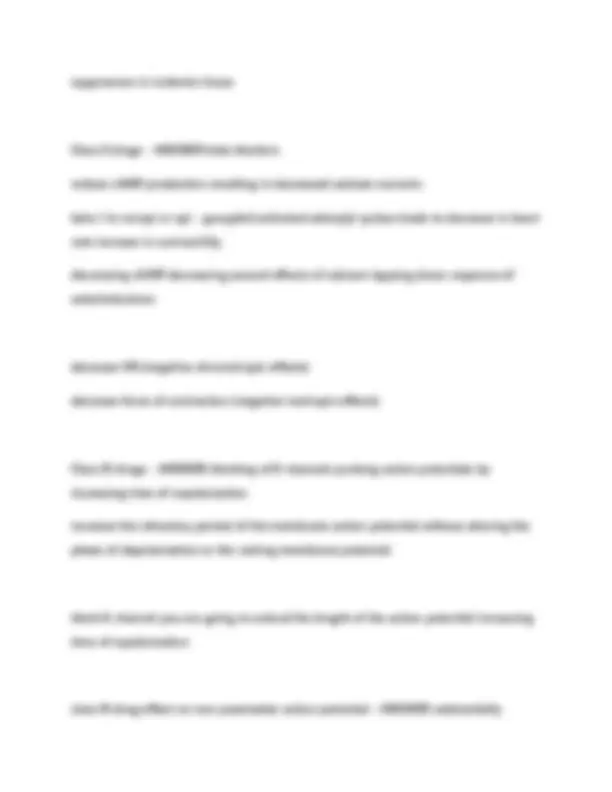
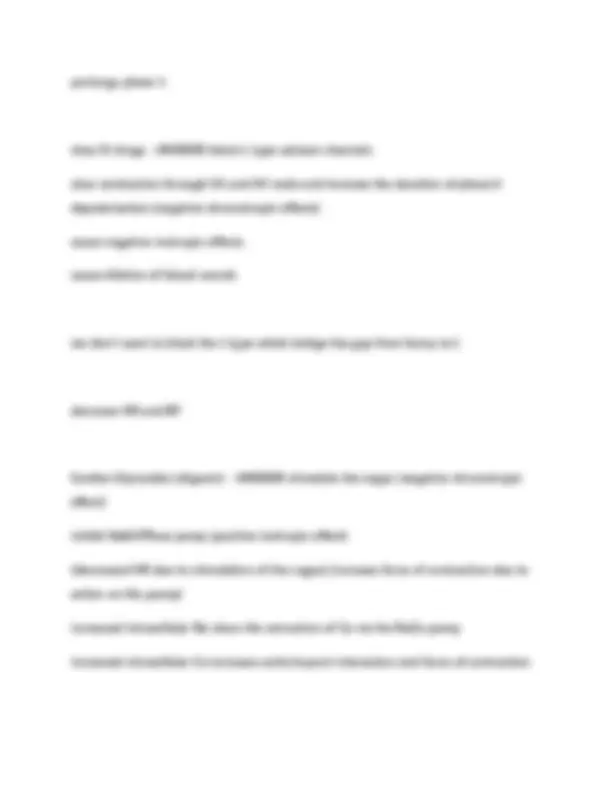
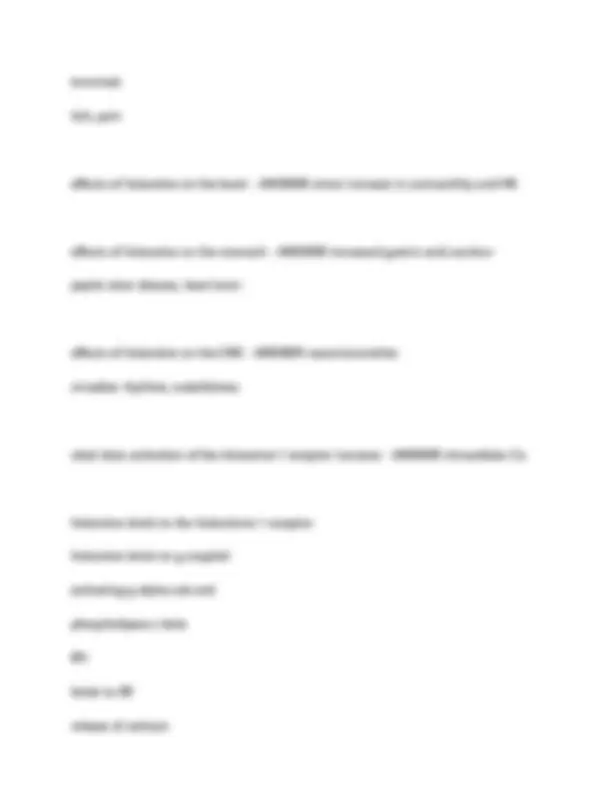
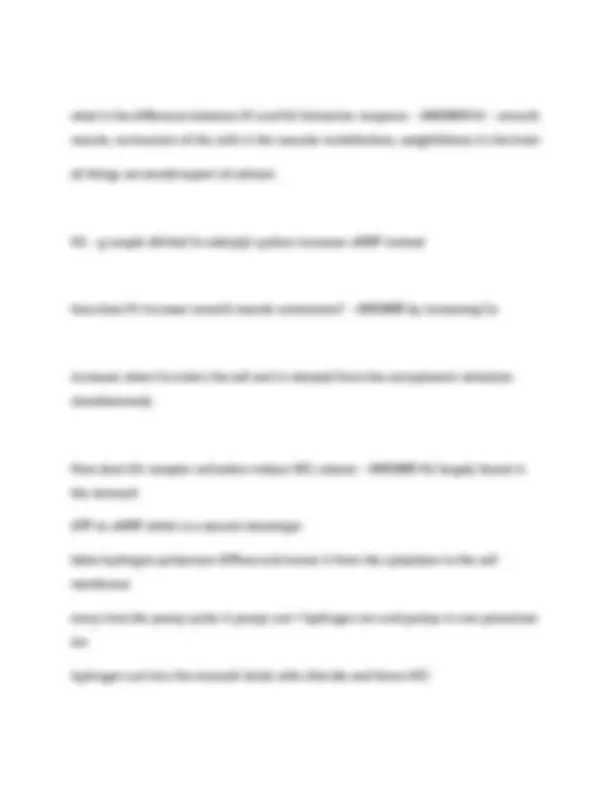
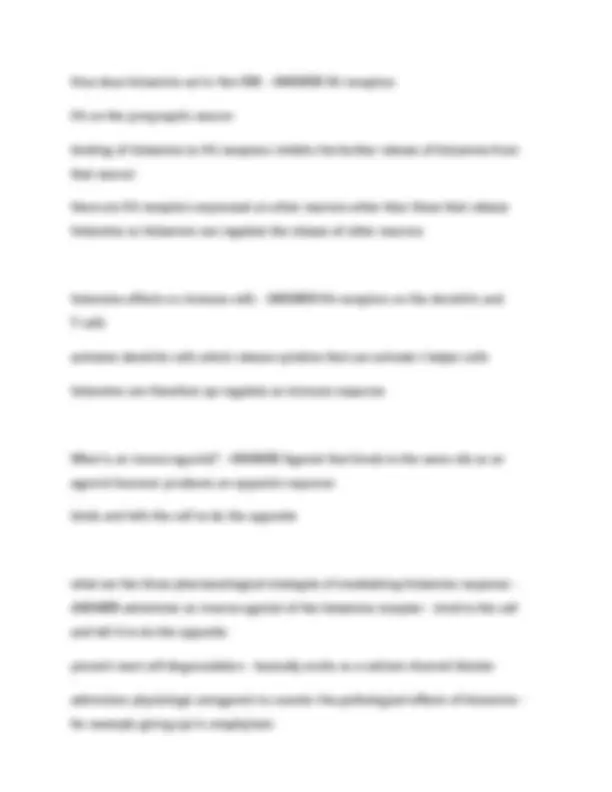
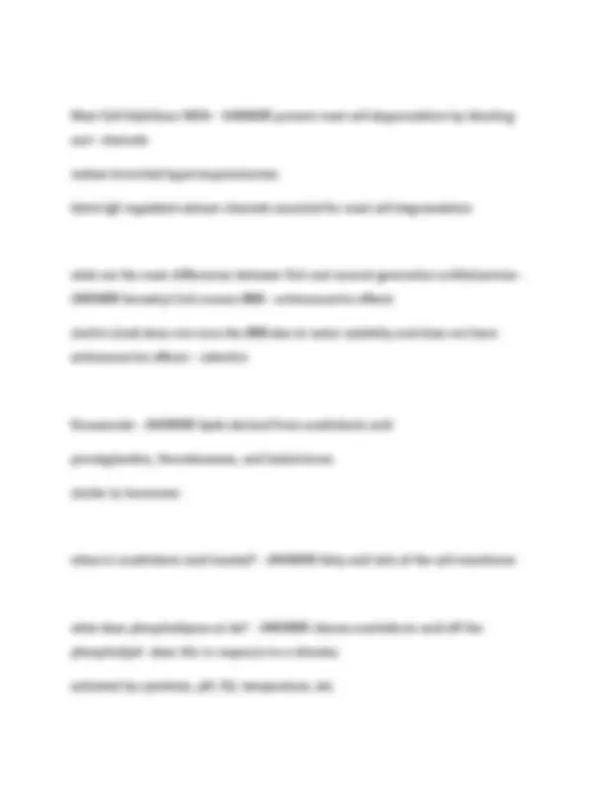
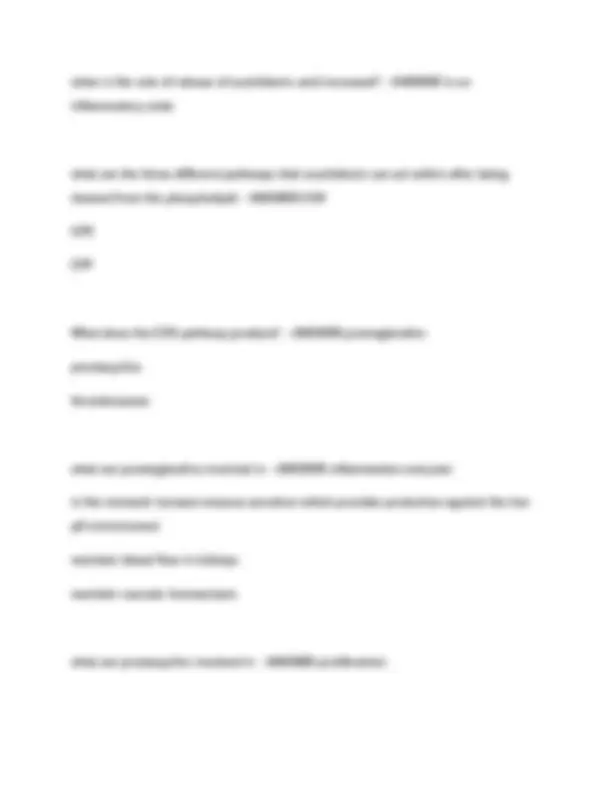
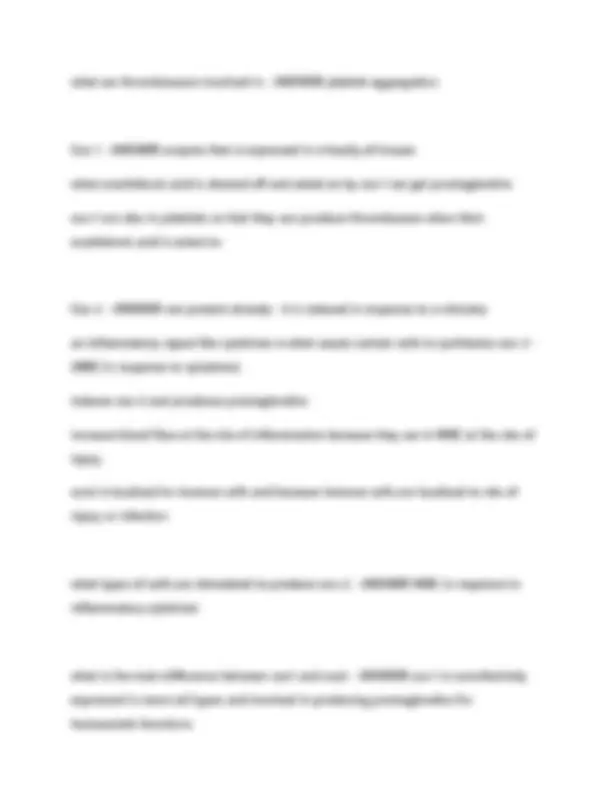
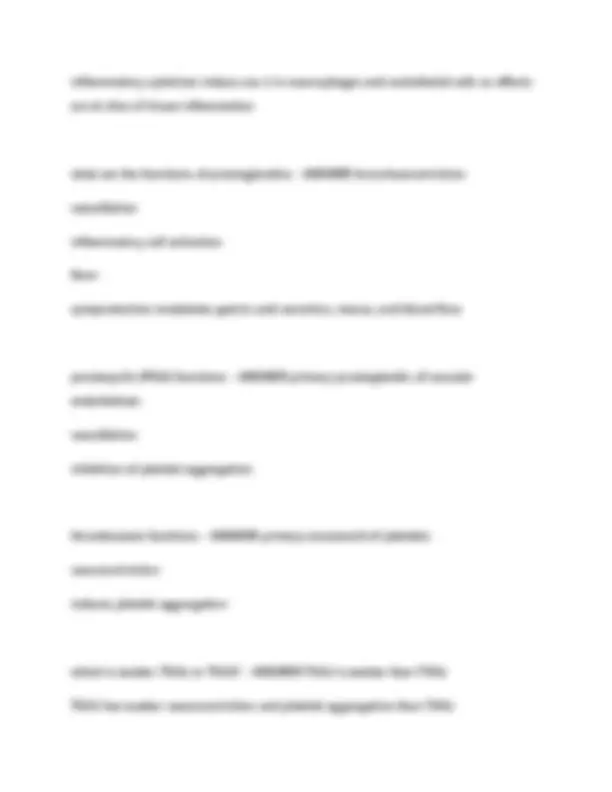
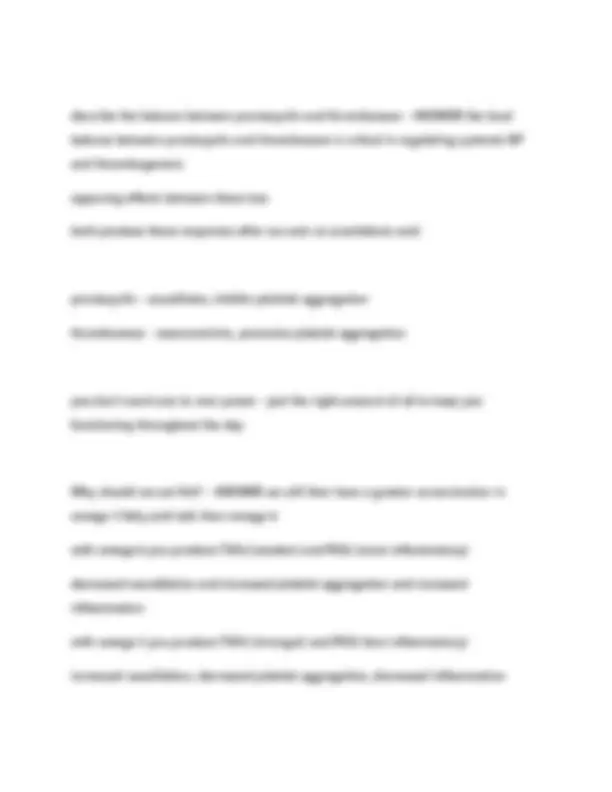
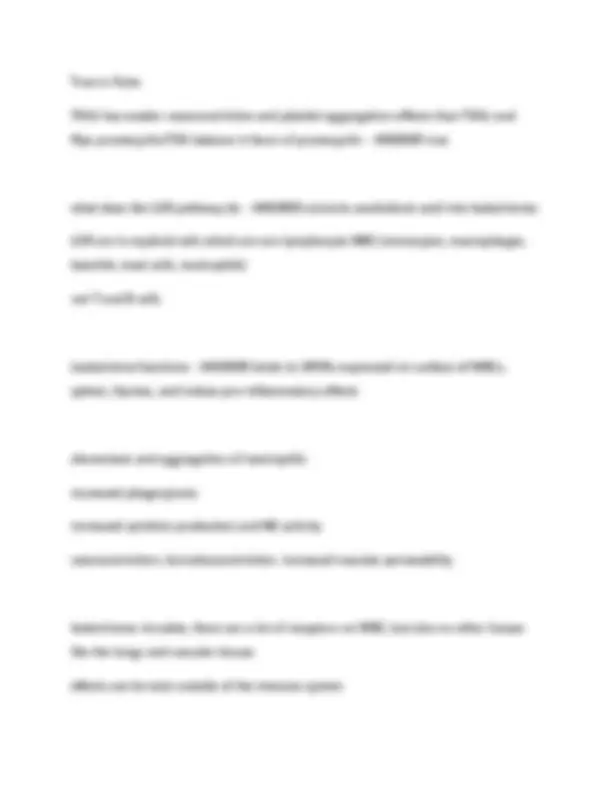
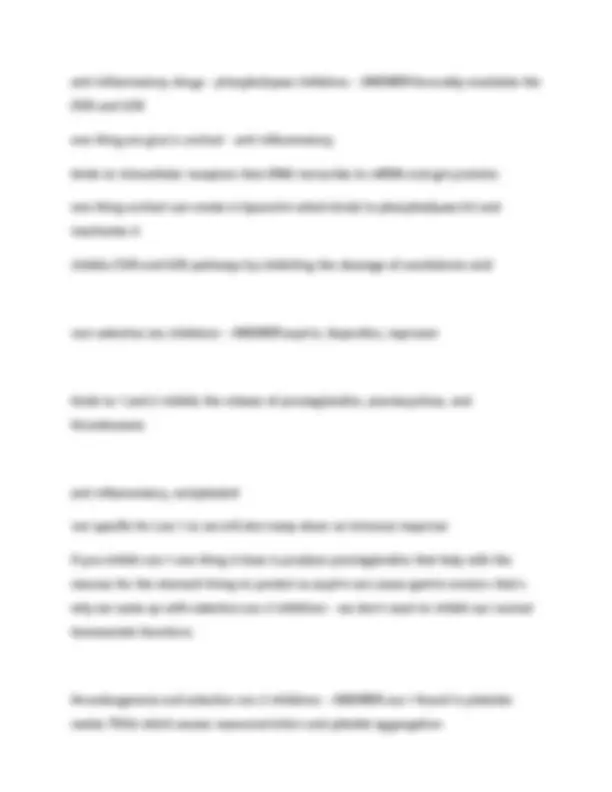
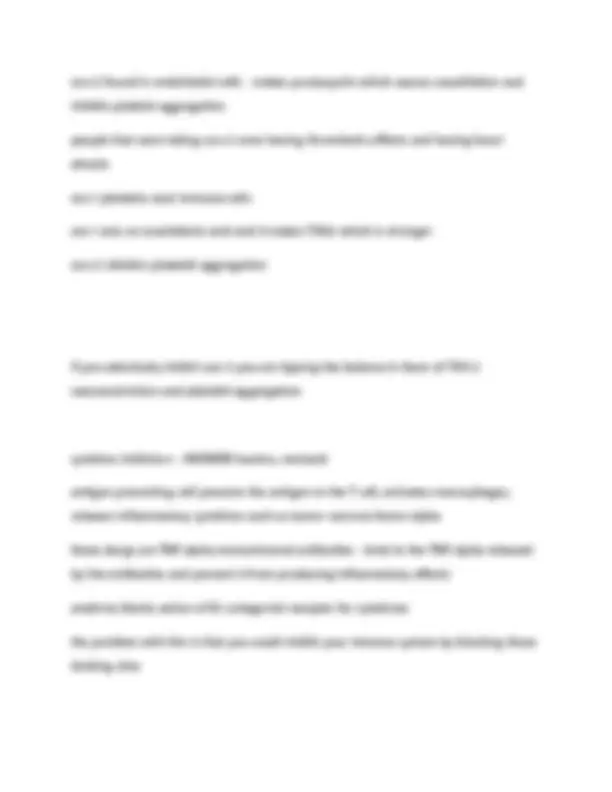
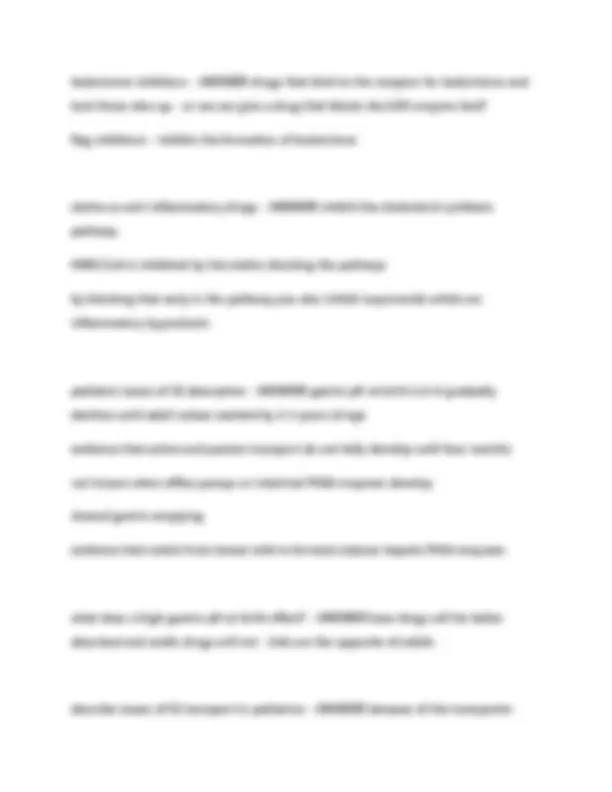
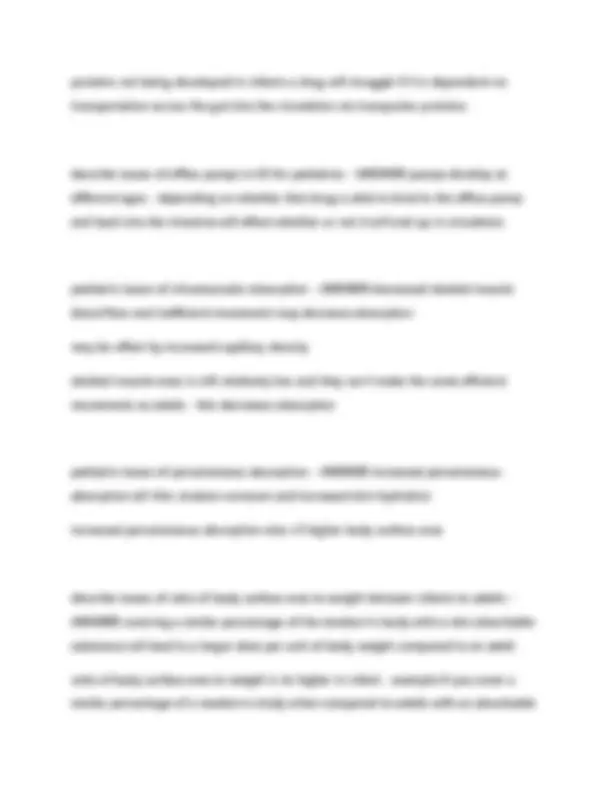
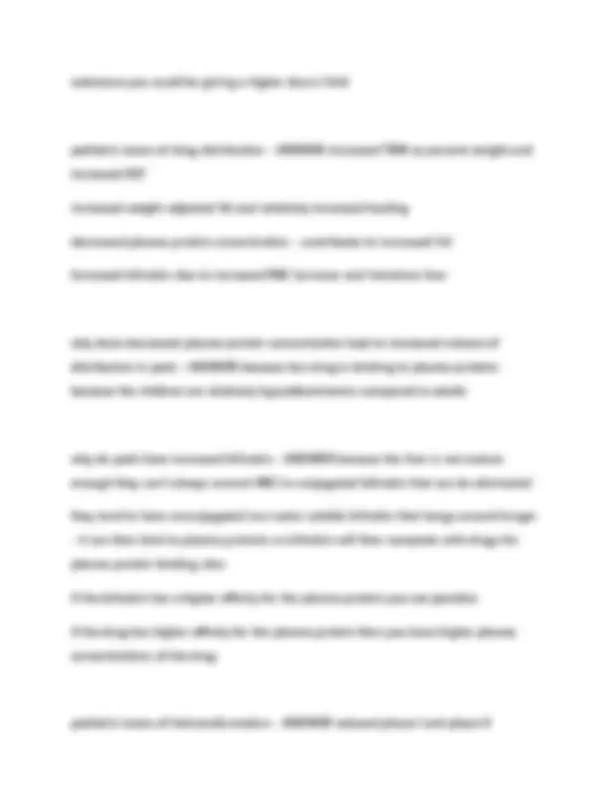
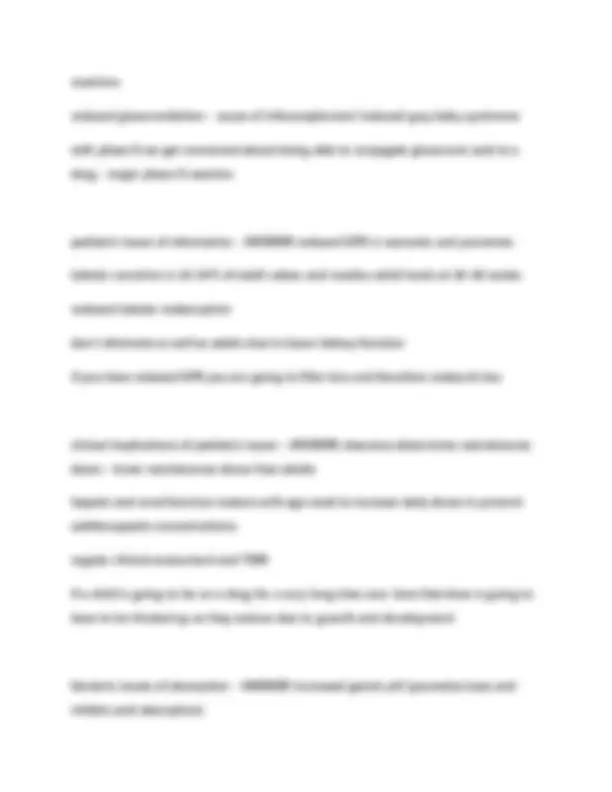
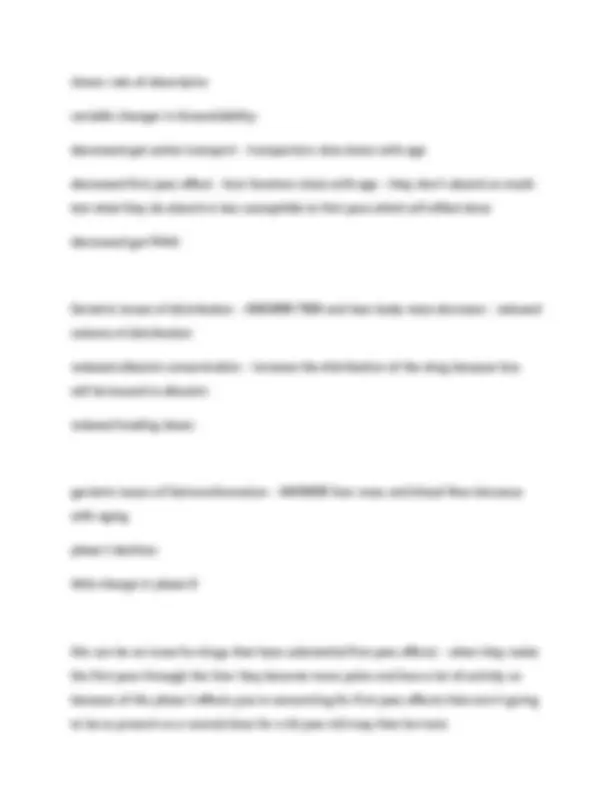
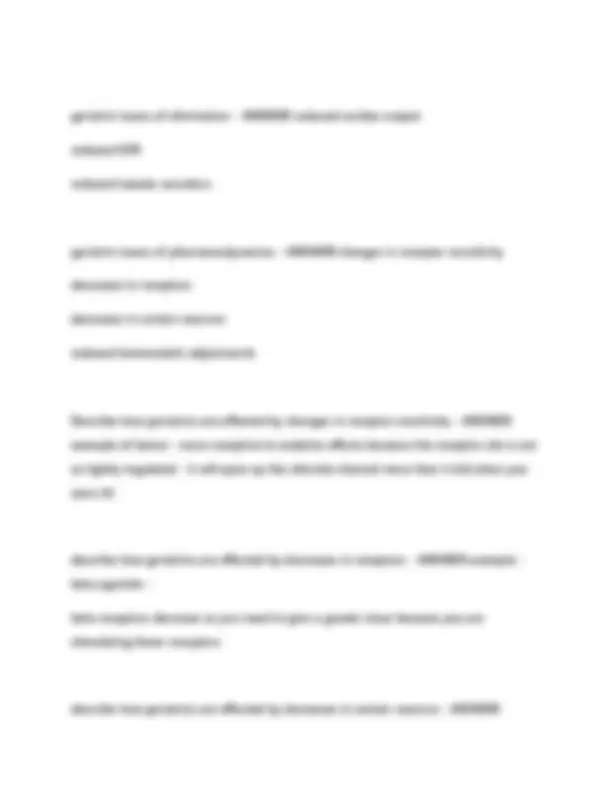
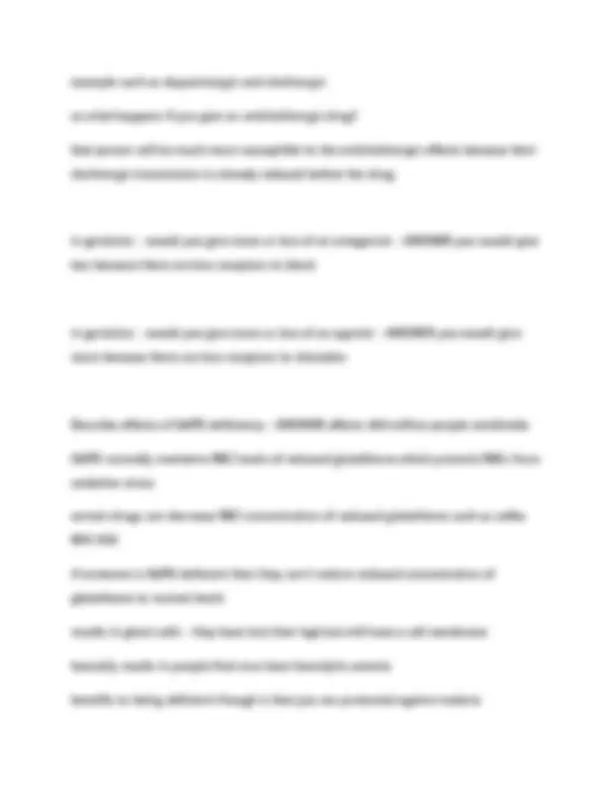
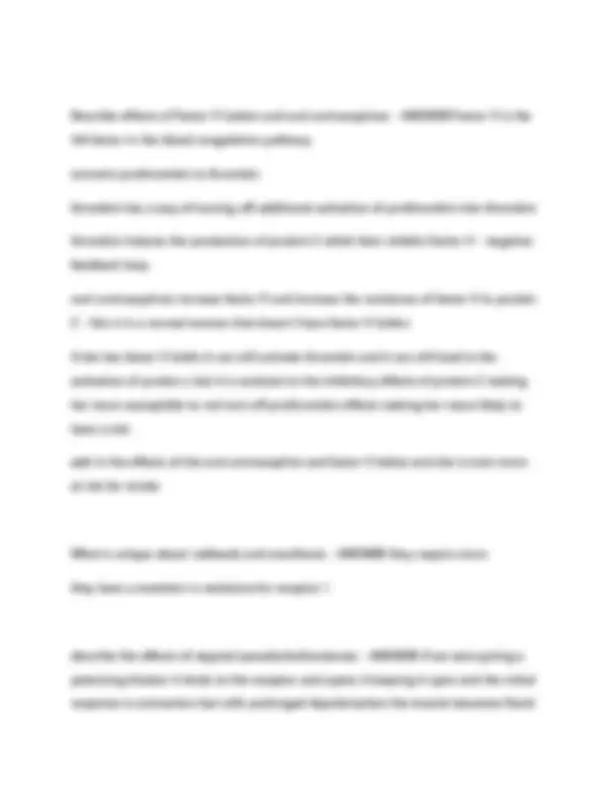
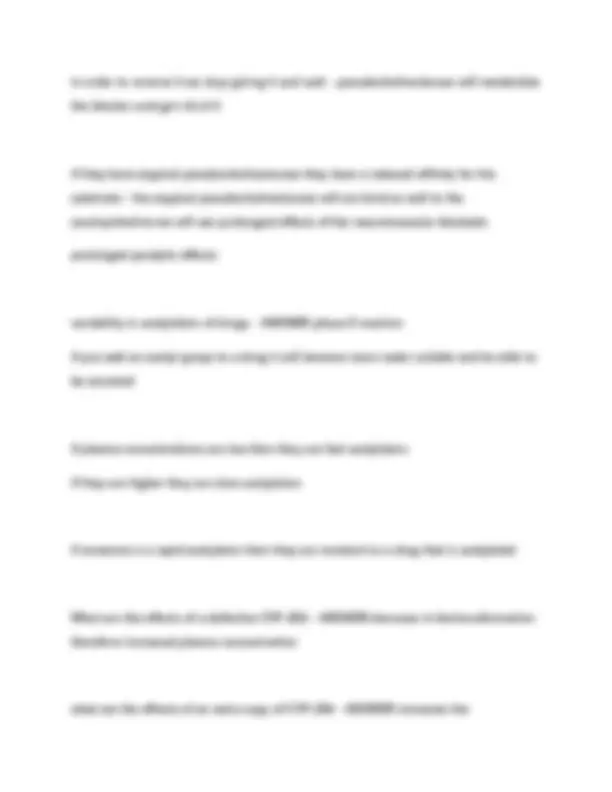
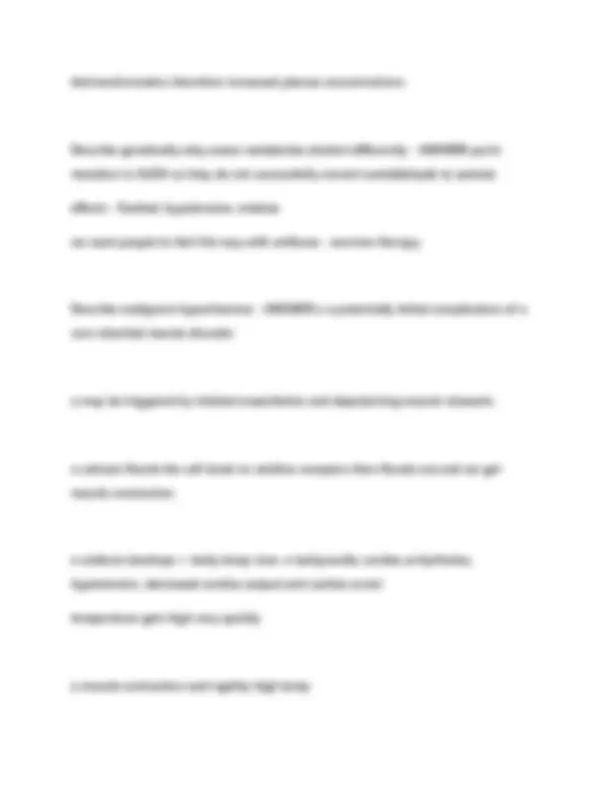
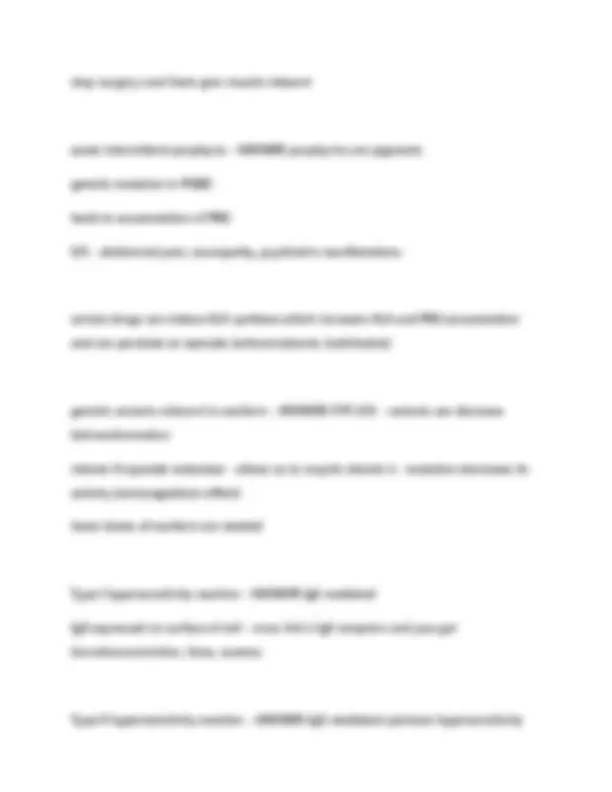
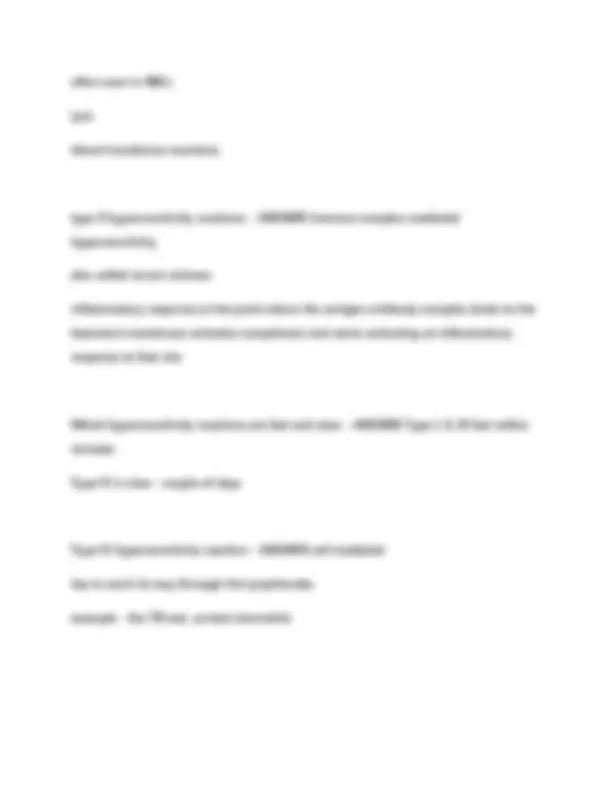


Study with the several resources on Docsity

Earn points by helping other students or get them with a premium plan


Prepare for your exams
Study with the several resources on Docsity

Earn points to download
Earn points by helping other students or get them with a premium plan
Community
Ask the community for help and clear up your study doubts
Discover the best universities in your country according to Docsity users
Free resources
Download our free guides on studying techniques, anxiety management strategies, and thesis advice from Docsity tutors
A detailed explanation of cardiac action potentials, comparing them to those in the cns and ans. it covers the five phases of non-pacemaker action potentials, the role of calcium and potassium channels, excitation-contraction coupling, and the effects of adrenergic and cholinergic stimulation. numerous questions and answers to test understanding and promote deeper learning of this complex topic in physiology.
Typology: Exams
1 / 40

This page cannot be seen from the preview
Don't miss anything!

































what is the difference between cardiac myocyte action potential and that of the CNS or ANS? - ANSWER nerve cell action potential is very short cardiac action potential is much longer they are longer to have adequate filling time in order to get a good contraction for a reasonable bolus of blood the only way this can happen is if the action potential is longer this will also mean that the refractory period will be longer
What are the 5 phases of the non-pacemaker action potential? - ANSWER 0 - depolarization 1 - partial repolarization 2 - plateau 3 - repolarization 4 - resting membrane potential
what happens during phase 0 of the non-pacemaker action potential - ANSWER depolarization
voltage gated sodium channels are opening up until we get past threshold
what happens during phase 1 of the non-pacemaker action potential - ANSWER partial repolarization
what happens during phase 2 of the non-pacemaker action potential - ANSWER plateau calcium channels open (L-type because they are long) potassium is still open potassium out and calcium in - they are opposing each other in voltage giving the plateau this is when the ventricles are filling
what happens during phase 3 of the non-pacemaker action potential - ANSWER repolarization calcium channels are closed potassium channels are the only thing open taking their positive charge with them making the interior more negative
what happens during phase 4 of the non-pacemaker action potential - ANSWER resting membrane potential where we are in between action potentials there is no net change in ovltage inside the cell
what are the phases of pacemaker action potential - ANSWER 0 - rapid depolarization 3 - repolarization 4 - slow depolarization
what happens during phase 0 of the pacemaker action potential - ANSWER Rapid depolarization something is coming to open voltage gated calcium channels (L-type) calcium comes rushing in
what happens during phase 3 of the pacemaker action potential - ANSWER repolarization potassium channels now open up, potassium rushes out, repolarizes
what happens during phase 4 of the pacemaker action potential - ANSWER slow depolarization with potassium rushing out we are all the way down at - funny sodium channels open up until voltage reaches - T-type (transient) calcium channels open up until voltage reaches - L-type calcium channels then open back up
Describe how non-pacemaker APs can mimic pacemkaer APs - ANSWER Hypoxia and ischemia when the resting membrane potential is not getting enough oxygen it is going to become more positive because you need oxygen to produce ATP. If we are deficient in ATP then the NA K ATPase pump wont be functioning
if someone is hypoxic in a focal area - say they have a resting membrane potential at -45 - the fast sodium channels won't open - they start using calcium to open - so they would convert into action potentials that use calcium (hence how they mimic pacemaker APs)
excitation-contraction coupling - ANSWER sequence of events from motor neuron signaling to a skeletal muscle fiber to contraction of the fiber's sarcomeres conversion of depolarizing currents into contractile force L-type calcium channels open up in phase 2 in nonpacemaker - calcium comes flooding into myocytes, so we now have calcium in the cell and a sarcoplasmic recticulum (a resovior for calcium) receptors called RYR (ligand gated calcium channels) calcium then comes out - coming int the cell from the calcium channels and the sarcoplasmic recticulum
describe how calcium binds to cause contraction - ANSWER when there is an influx of calcium in the cell there is a myosin head separated by troponin. little binding sites for
heightened sympathetic state shortens effective refractory period increases rate of contraction
how do catecholamines effect the NaK ATPase Pump - ANSWER epi to beta 1 - g coupled protein receptor increase in cAMP activate protein kinase phosphorylate and increase in ATPase proteins available on the cell surface this is why we give epi during hypoxia - cardiac arrest - so that we can initiate more action potentials
how does cholinergic stimulation work to decrease heart rate - ANSWER effects on m2 receptors acetylcholine binds to g coupled, alpha subunit comes off can bind to t-type calcium channel - opens after funny sodium and before L-type - if it binds it will inhibit it which will decrease the heart rate
it can also bind to potassium channels increasing intracellular potassium causes repolarization and actually hyperpolarization
both will have negative chronotropic effects and decrease the heart rate
reduces opening of Ca2 channels on the surface of the nodal cells - Ach opens K+ channels and hyperpolarizes nodal cells moving them further away from threshold
heart block - ANSWER one of the main phenomena causing pathological disturbances in rhythms arises from fibrosis or ischemia damage in the conducting system - usually in the AV node
ectopic pacemaker - ANSWER one of the main phenomena causing pathological disturbances in rhythms pacemaker activity can arise from other tissue when there is ischemia or increased catecholamines they increase intracellular Ca2 concentration raise resting membrane potential and can close Na channels
after depolarizations - ANSWER one of the main phenomena causing pathological disturbances in rhythms -spontaneous depolarizations of nonpacemaker cells during either phase 3 (repolarization) or phase 4 (RMP); occur after ERP
what causes after depolarizations - ANSWER most often caused by elevated
conduction time>ERP
what are the two main symptoms we see with re-entry - ANSWER tachycardia and atrial flutter
Wolf-Parkinson-White Syndrome - ANSWER ventricular preexcitation syndrome
accessory conduction pathway from atria to ventricle (bundle of Kent), bypassing AV node
ventricles begin to partially depolarize earlier --> delta wave on EKG
can result in reentry current leading to supraventricular tachycardia
tx: (type Ia) quinidine, disopyramide, procainamide slows AP conduction in myocardium, helps suppress bundle of Kent
also do ablation of kent bundle
DO NOT USE types II (beta block), IV (Ca block)...these incr AV node refractoriness and would worsen condition
what are the different anti-arrhythmic drug classes - ANSWER class I - sodium channel blockers class II - beta adrenergic blockers class III - potassium channel blockers - drugs that prolong cardiac action potential increase in the refractory period Class IV - calcium channel blockers
Class I anti-arrhythmic agents - ANSWER act on myocytes not pacemaker cells (driven by sodium) effect on the action potential is to prolong depolarization (phase 0) are use dependent because they work better at faster heart rates (bind preferentially to open or inactivated channels)
what are the three states that the sodium channels exist in - ANSWER threshold depolarizing spike refractory
Class IA antiarrhythmics - ANSWER -slow depolarization (phase 0)
Class Ic anti-arrhythmic - ANSWER dissociate from Na channel with slow kinetics - stay on longer bind to open Na channels cause general reduction in excitability because they stay on longer don't bind to K channels could end up blocking a normal impulse because they stay on so long
what are the main differences in action with Class Ia Ib and Ic antiarrhythmic durgs - ANSWER 1a - inbetween in terms of fast on off. they like open channels. slow rate of depolarization prolong repolarization 1b - doesn't effect the action potential it didn't have an effect on k+ channels - don't effect depolarization they should stop an abhorrent impulse but come off quick enough the normal impulse can act 1c - slows phase 0 the most because it stays on the longest no effect on k+ channels so we are not effecting the refractory period
what does blocking Na channels do - ANSWER prolong depolarization
what does blocking open and inactivated channels correlate with - ANSWER use-dependence
what does blocking inactivated channels correlate with - ANSWER selective
suppression in ischemic tissue
Class II drugs - ANSWER beta blockers reduce cAMP production resulting in decreased calcium currents beta 1 to norepi or epi - gcoupled activated adenylyl cyclase leads to decrease in heart rate increase in contractility decreasing cAMP decreasing second effects of calcium tapping down response of catecholamines
decrease HR (negative chronotropic effects) decrease force of contraction (negative inotropic effects)
Class III drugs - ANSWER blocking of K channels prolong action potentials by increasing time of repolarization increase the refractory period of the membrane action potential without altering the phase of depolarization or the resting membrane potential
block K channel you are going to extend the length of the action potential increasing time of repolarization
class III drug effect on non-pacemaker action potential - ANSWER substantially
digoxin inhibits the Na Ca exchange pump intracellular sodium is going to effect the calcium out if sodium is higher because of the inactivation of the pump we have more calcium hanging around so force of contraction goes up.
inflammation - ANSWER response to injury or infection involves redness, swelling, heat, loss of function
histamine release - ANSWER released by basophils (circulating in the plasma) and mast cells (extravasate from the plasma and get in tissue) in response to direct trauma or exposure to allergen both WBCs contain histamine waiting to be released in response to direct trauma or allergen
what produces IgE - ANSWER b lymphocytes in response to exposure to allergen each antibody has a part of the antibody that is specific and will only bind to its allergen another part has the FC that binds to the FC receptor on the surface of cells such as mast or basophils
mast cell degranulation - ANSWER 1. capillary vasodilation
mast cell has FC receptors if we get subsequent exposure to the allergen there is a cascade of signals that eventually releases calcium from the ER which mediates the release of the histamine
effect of histamine on the lungs - ANSWER bronchoconstriction - astma like symptoms
effects of histamine on vascular smooth muscle - ANSWER postcapillary venule dilation terminal arteriole dilation venoconstriction erythema
effects of histamine on vascular endothelium - ANSWER contraction and separation of endothelial cells edema
effects of histamine on peripheral nerves - ANSWER sensitization of afferent nerve
what is the difference between H1 and H2 histamine receptors - ANSWER H1 - smooth muscle, contraction of the cells in the vascular endothelium, weightfulness in the brain all things we would expect of calcium
H2 - g couple dlinked to adenylyl cyclase increases cAMP instead
how does H1 increase smooth muscle contraction? - ANSWER by increasing Ca
increases when Ca enters the cell and is released from the sarcoplasmic reticulum simultaneously
How does H2 receptor activation induce HCL release - ANSWER H2 largely found in the stomach ATP to cAMP which is a second messenger takes hydrogen potassium ATPase and moves it from the cytoplasm to the cell membrane every time the pump cycles it pumps out 1 hydrogen ion and pumps in one potassium ion hydrogen out into the stomach binds with chloride and forms HCl
How does histamine act in the CNS - ANSWER H3 receptors H3 on the presynaptic neuron binding of histamine to H3 receptors inhibits the further release of histamine from that neuron there are H3 receptors expressed on other neurons other than those that release histamine so histamine can regulate the release of other neurons
histamine effects on immune cells - ANSWER H4 receptors on the dendritic and T-cells activates dendritic cells which release cytokine that can activate t helper cells histamine can therefore up-regulate an immune response
What is an inverse agonist? - ANSWER Agonist that binds to the same site as an agonist however produces an opposite response binds and tells the cell to do the opposite
what are the three pharmacological strategies of modulating histamine response - ANSWER administer an inverse agonist of the histamine receptor - bind to the cell and tell it to do the opposite prevent mast cell degranulation - basically works as a calcium channel blocker administer physiologic antagonist to counter the pathological effects of histamine - for example giving epi in anaphylaxis